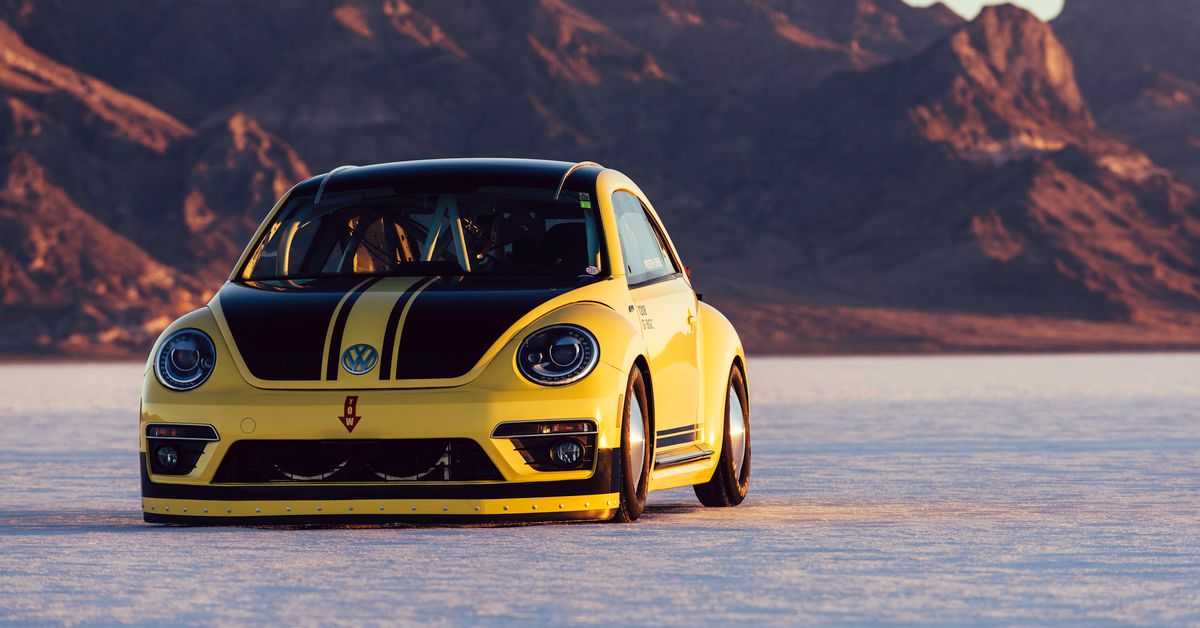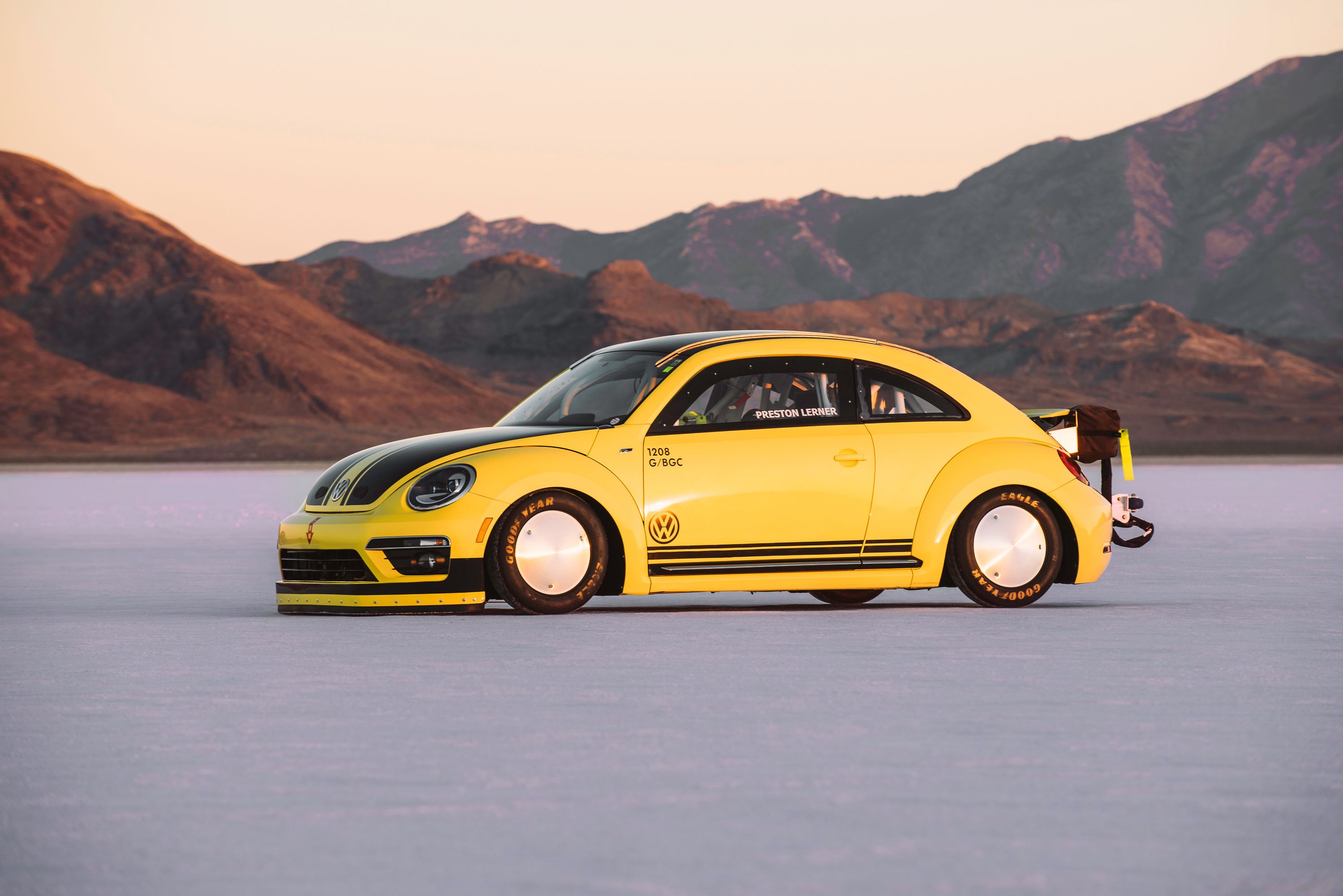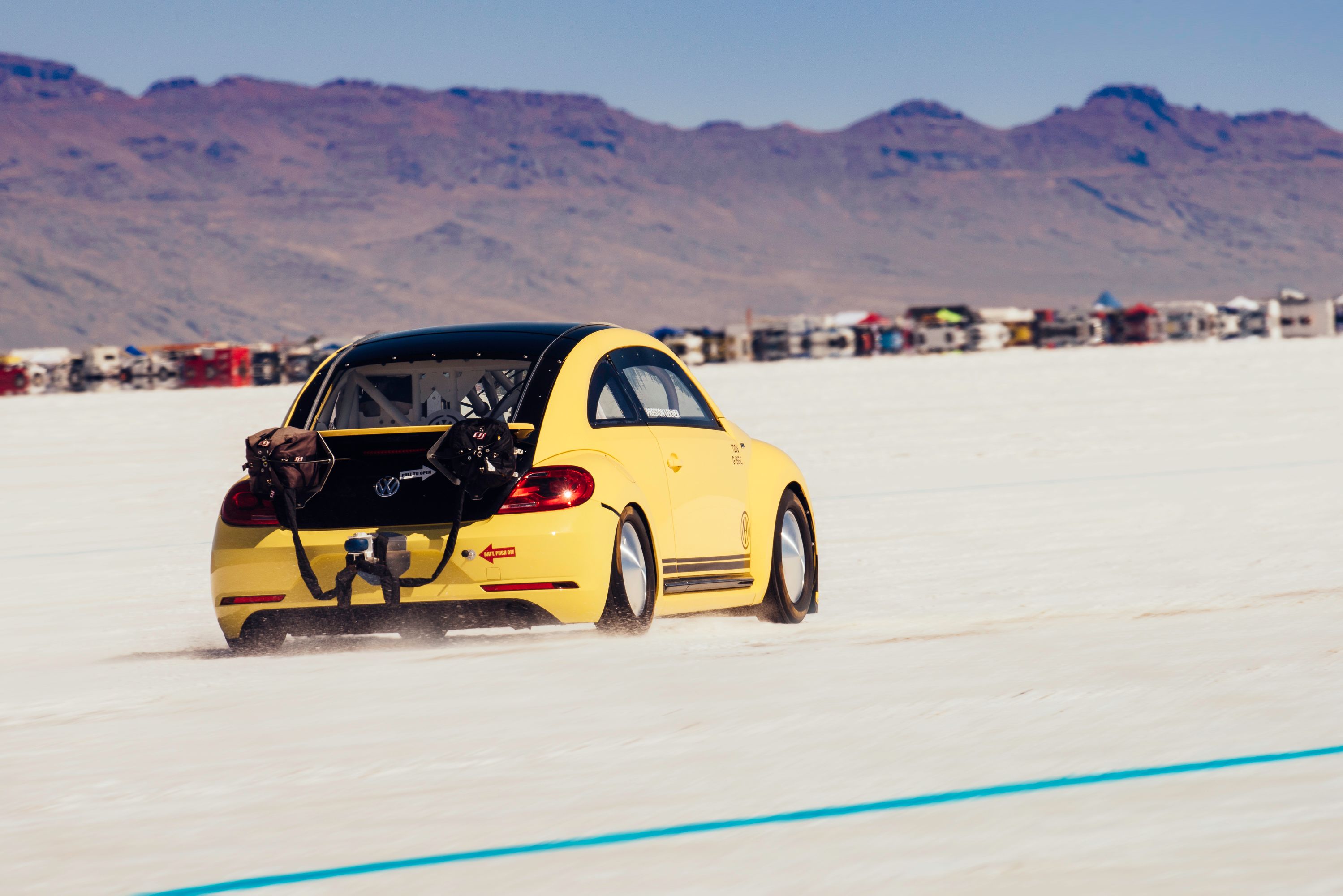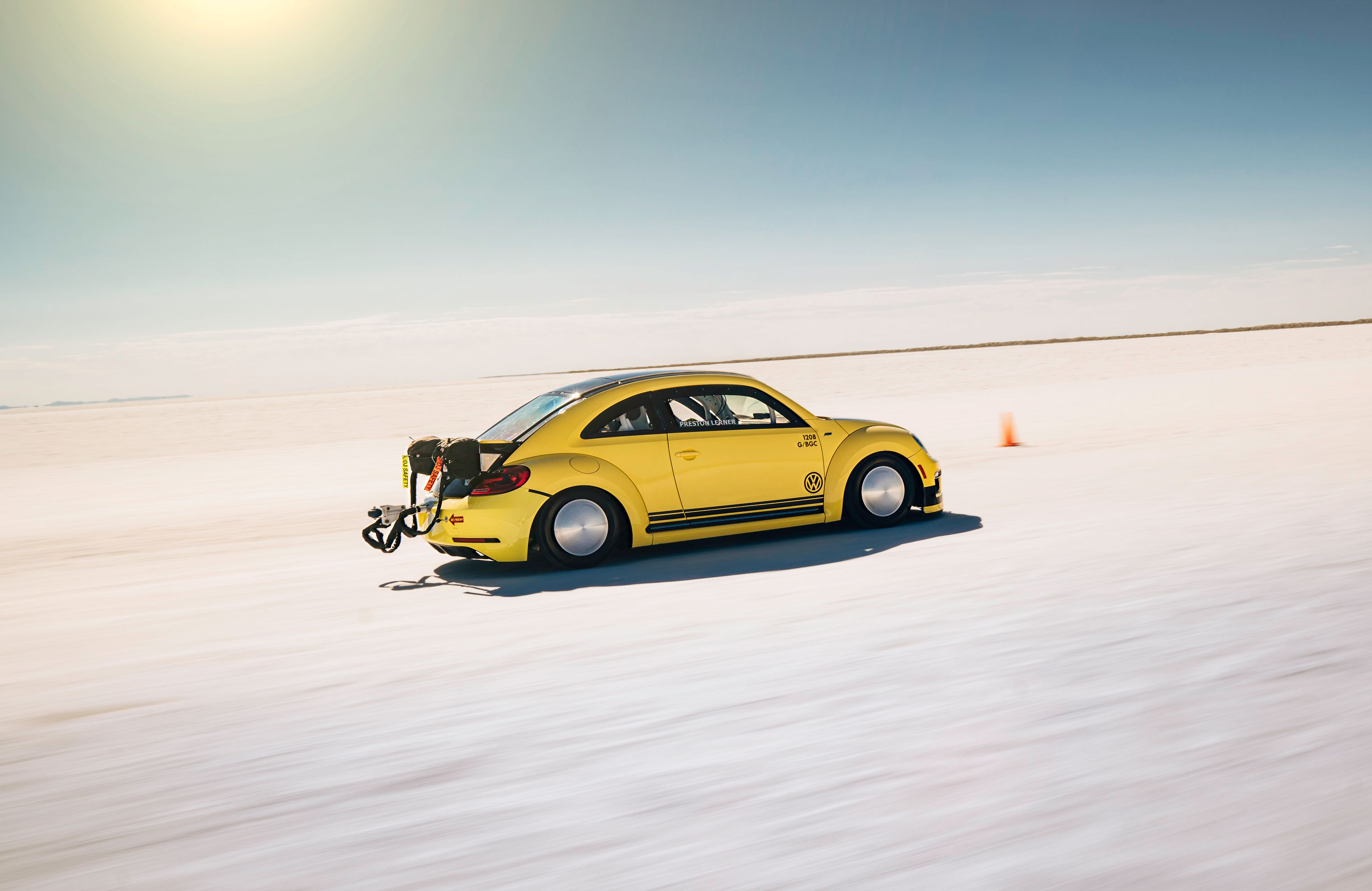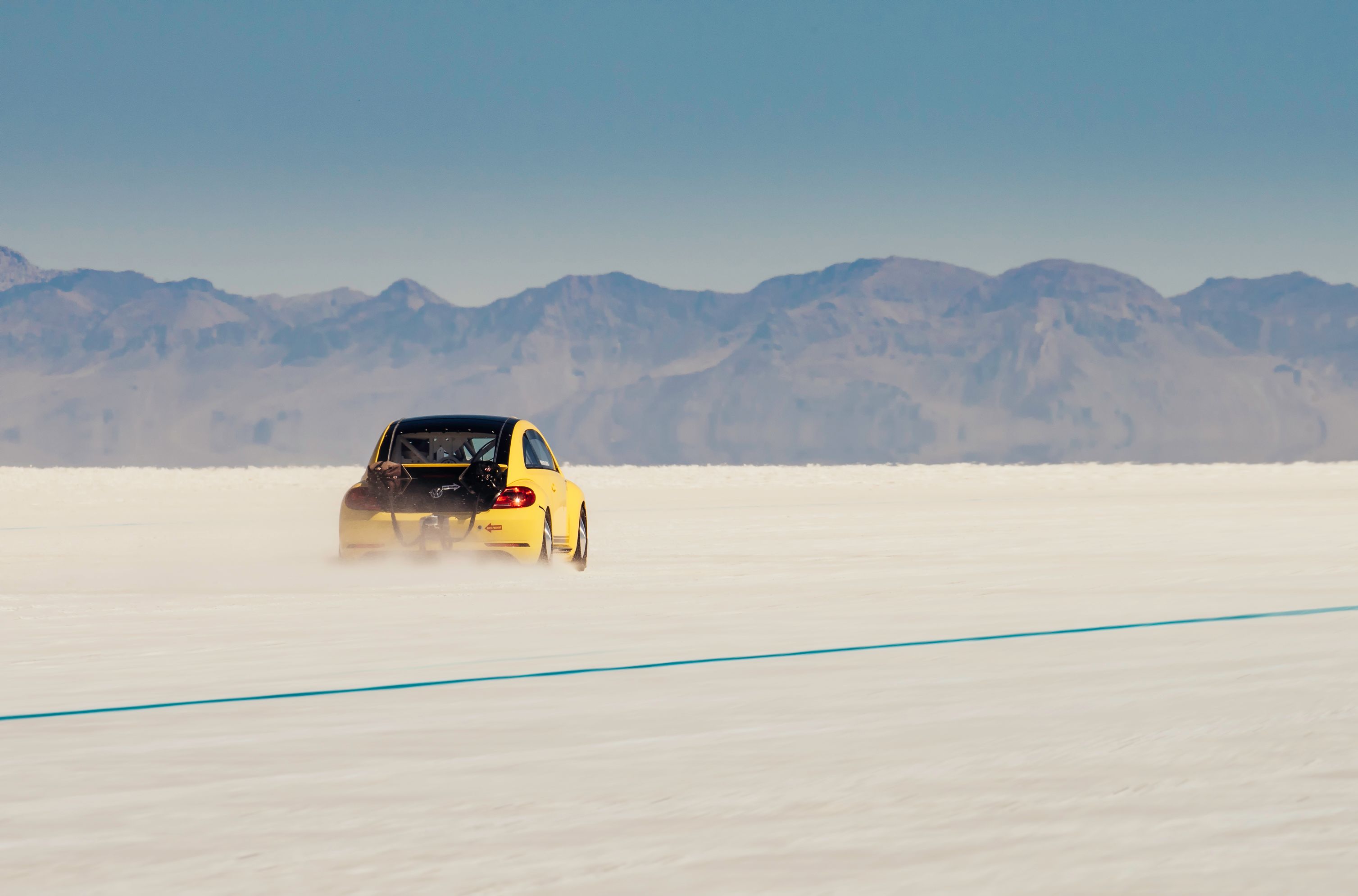The Bonneville Salt Flats are located in northwestern Utah and encompass an area of about 30,000 acres. Once a large and expansive lake, the area now consists mostly of an ultra-dry, salty, and crustal topsoil. Thanks to its geological makeup and extreme heat, the region is so inhospitable, that even the simplest of life forms cannot survive. Despite this being the case, it appears that some didn't get this memo.
Starting in 1912, humans have been using the flats to see how fast their cars can go in a straight line. Thanks to the soil's flat and dry consistency (and word of mouth), it didn't take too long for the area to become known for the insane high-speed records set there. Since then, we have bore witness to people and machines practically bending the laws of physics in order to achieve speeds only dreamt of by man.
It is this very spirit that has driven Volkswagen to curate a Beetle specifically for the Bonneville Salt Flats. Like many before them, the goal was to simply see how fast they could make this rendition of "The People's Car" go. Ultimately, the result was the creation of the Volkswagen Beetle LSR: The world's fastest Beetle.
Let's take a look at how fast this Bug can really move.
They Only Had To Change One Thing: Everything
As you can imagine, making a Beetle into a rip-snorting dragster tends to require a few modifications, to say the least. Because of this, the German company handed one of their Beetles over to tuning company: THR Manufacturing. According to Volkswagen, the Santa Paula-based company put in new "turbochargers, pistons, camshafts, connecting rods, and head modifications." Surprisingly enough, the company decided to keep the original (albeit heavily modified) EA888 2.0-liter turbocharged four-cylinder engine as the LSR's power unit.
The fruits of their labor were a motor that provided an output of around 543 HP and 421 lb-ft of torque. At the flywheel, the numbers were even more impressive, as the amount of power being produced hovered around 600 HP! Because of these power figures, VW thought it would be wise to include fire suppression systems, a roll cage, racing seat harnesses, and parachutes at the back.
How Did The Record Setting Run Go?
Well, judging by the title, you can probably make an educated guess as to how things went. Driver Preston Lerner (an editor for Automobile Magazine) was the man tasked with taking the car on its record-setting run. After being strapped into the Beetle-based rocket, Lerner began to accelerate and took off straight into the history books.
At the conclusion of his drive, Lerner was able to get the LSR up to a whopping 205.122 MPH! As a result of his efforts, the LSR officially became the fastest Beetle on planet Earth. Despite this, Lerner claims that the car could have gone faster if it were not so sketchy towards the end.
When Will The Record Be Beat Again?
In 2021, the record has still had yet to be broken. Sadly, this is likely due to the fact that the Beetle was discontinued yet again, back in 2019. So, will we ever see the record be broken again?
Thankfully, the answer is probably yes. This is simply because of Volkswagen's enormous push for an all-electric fleet by the year 2026. Though there has been no official public announcement regarding the rebirth of the Beetle, it is unlikely that the company will let the perfect candidate to be EV'd sit forever in retirement. Until then, we'll just have to settle with the LSR.

